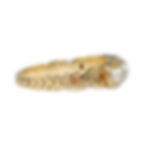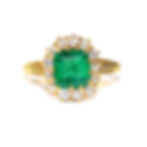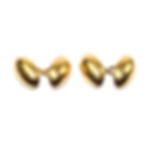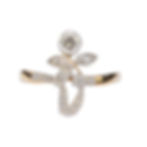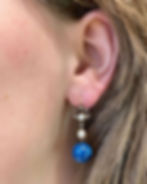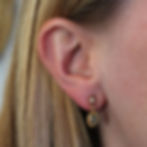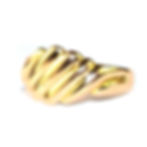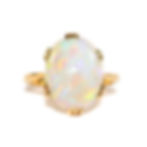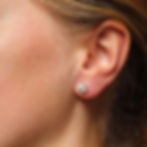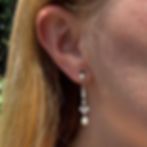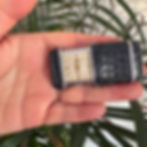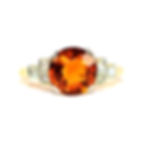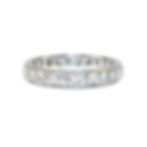Antique Jewellery Eras: A Collector's Guide
Embark on a journey through time with Thomas Glover's exquisite collection of antique jewellery. From the ornate designs of the Georgian era to the bold geometrics of Art Deco, each period offers a unique glimpse into the artistry, culture, and craftsmanship of its time.
Our carefully curated selection spans over two centuries of jewellery evolution, showcasing rare and beautiful pieces that have stood the test of time. Whether you're a passionate collector, a history enthusiast, or simply in search of a one-of-a-kind treasure, this guide will illuminate the distinctive characteristics of each era, helping you appreciate the rich heritage behind every gem and setting. Discover the allure of antique jewellery and find your perfect piece of wearable history.



Georgian Era (1714-1837)
The Georgian period marks the birth of many jewelry-making techniques still used today. Handcrafted pieces from this era are rare and highly sought-after. Look for nature-inspired designs, intricate metalwork, and large gemstones. Key features include cannetille work, memento mori jewellery, and the use of rose-cut and table-cut diamonds. Popular motifs were stars, ribbons, scrolls, and flowers. Our collection features exquisite Georgian pieces like agate fob seals, memorial brooches, and seed pearl earrings.

Victorian Era (1837-1901)
Queen Victoria's reign saw three distinct jewellery phases: Romantic, Grand, and Aesthetic. Early Victorian jewellery focused on sentimental designs and coloured gemstones. The Grand period introduced more ostentatious styles, while the Aesthetic period saw a return to delicate designs influenced by Japanese art. Notable pieces include mourning jewelry, snake motifs symbolizing eternal love, and intricate gold work. Explore our Victorian treasures, from ruby heart pendants to diamond cluster earrings.

Arts and Crafts Movement (1887-1920)
This movement arose as a reaction to mass-produced jewelry, emphasizing handcrafted pieces and natural motifs. Jewelers used semi-precious materials like moonstone, turquoise, and amethyst, often in cabochon cuts. Copper and silver were preferred, with gold as an accent. Our collection showcases the movement's dedication to craftsmanship and organic designs.

Art Nouveau Era (1890-1910)
Art Nouveau jewellery is characterised by flowing, organic lines inspired by nature. Innovative techniques like plique-à-jour enamel were popularised. Common motifs included flowers, insects, and the female form. Notable designers include René Lalique and Carlo Giuliano. Discover our Art Nouveau pieces, featuring opal shamrock brooches and pearl-accented pendants.

Edwardian Era (1901-1910)
Edwardian jewellery epitomises elegance with its use of platinum, allowing for intricate, lace-like settings. The "garland style" featuring diamonds and pearls was highly popular. Tiaras, lavalieres, and dog collar necklaces were fashionable. Our Edwardian collection includes delicate diamond rings, aquamarine pendants, and enamel brooches.

Art Deco Period (1920-1935)
Art Deco jewellery is known for its bold, geometric designs and use of vivid colours. Influenced by Cubism and exotic cultures, jewellers combined precious stones with materials like onyx, jade, and lapis lazuli. Iconic pieces include diamond and coloured gemstone cocktail rings, clip brooches, and long sautoir necklaces. Explore our Art Deco selection, featuring sapphire target rings and blue zircon statement pieces.

Mid Century (1940s-1960s)
The Mid-Century period saw a dramatic shift in jewellery design, reflecting the optimism and innovation of the post-war era. This period encompasses styles from the bold gold of the 1940s to the space-age influences of the 1960s. Early Mid-Century pieces often featured large, sculptural designs in yellow gold, sometimes incorporating industrial motifs. The 1950s saw a return to femininity with floral designs and the increased use of diamonds and coloured gemstones. By the 1960s, jewellery became more experimental, with abstract forms, textured metals, and the use of unconventional materials. Notable designers of this era include Jean Schlumberger, Andrew Grima, and Georg Jensen. Our Mid-Century collection showcases the period's diversity, from classic cocktail rings to avant-garde artist-designed pieces, offering both vintage charm and modernist appeal.
























































